Illuminated Design: Metal Lighting in the Postwar Era
-

James Harvey Crate
If one could crown a winner of “the most famous design exhibited at MoMA by an otherwise completely obscure designer,” it might very well be James Harvey Crate. His T-C-3 lamp received Third Prize in MoMA’s Low-Cost Lighting Competition of 1951 and was shown in the New Lamps exhibition at the museum between March and June of that year. Crate was a 25-year-old designer at General Motors when he beat out hundreds of other entries for one of the prizes—the only significant recognition he would receive in his career. Crate’s one-hit wonder is a design icon of the Atomic Age. As MoMA’s curators wrote at the time, “the main feature of this lamp is the hyperbolic funnel” in aluminum, which projects the light outward towards the reflector disc, and can be adjusted using the three steel legs with cork ball feet. The resulting shadows that project against any white wall capture MoMA’s stated aim of bringing modern art into one’s life.
...
The T-C-3 lamp was produced in extremely limited quantities by the Heifetz Company in New York. Examples are in the collection of Brooklyn Museum and Cooper Hewitt.
Table Lamp, model T-C-3, in spun aluminum, enameled metal, steel, cork.
Designed by James Harvey Crate, USA, 1950. Manufactured by Heifetz Manufacturing Co., New York.
13" L x 13.5" W x 24" H
TL531
-
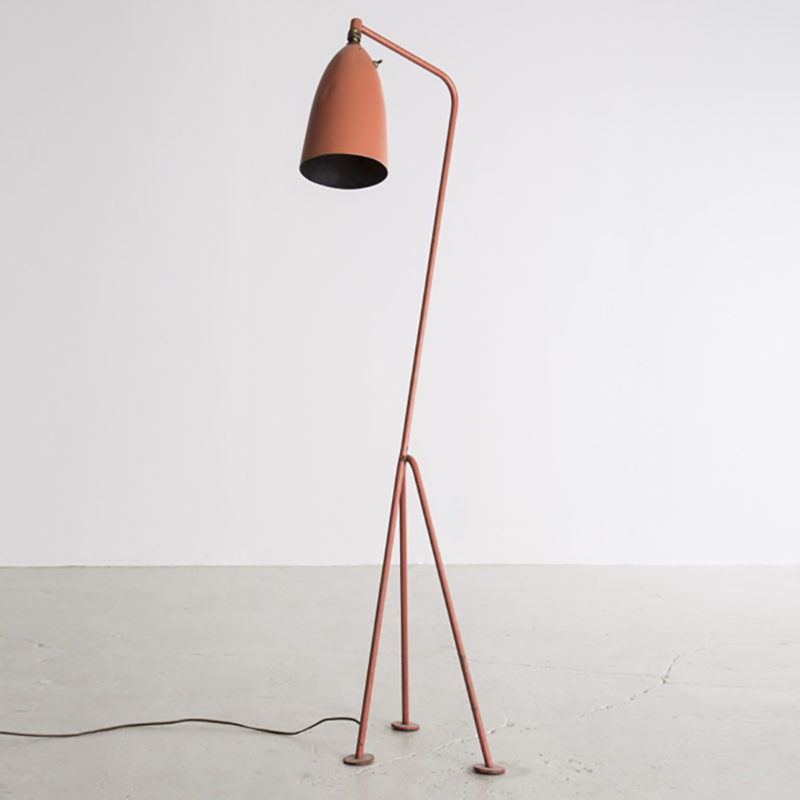
Greta Magnusson Grossman
Greta Magnusson Grossman maintained a prolific forty-year career on two continents, Europe and North America, with achievements in industrial design, interior design, and architecture. Although it was not as frequently exhibited in Good Design exhibitions in the 1950s as her Cobra table lamp, Magnusson Grossman’s Grasshopper floor lamp has become over time one of the most famous lights of midcentury modern design. This example in coral pink dates to the first years of production by Ralph O. Smith, the tiny Californian midcentury lighting manufactory, and allegedly belonged to Andy Warhol.
...
R & Company represents the Estate of Greta Magnusson Grossman and, over the past decade, has placed more than a half dozen Grasshopper lamps in American museum collections.
"Grasshopper" floor lamp in enameled aluminum and steel with original coral paint.
Designed by Greta Magnusson Grossman for Ralph O. Smith, Burbank, California, 1947-48.
14" L x 14" W x 48" H
FL272 -
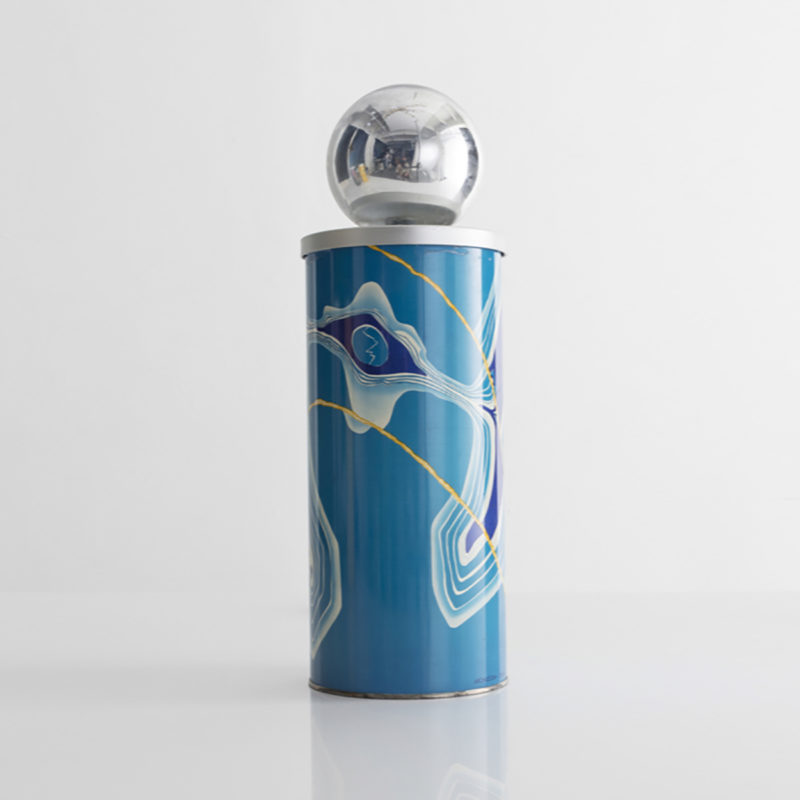
Archizoom Associati
Arguably the most influential group of Italian Radical design, Archizoom was founded in Florence around 1964 by Andrea Branzi, Massimo Morozzi, Gilberto Corretti, and Paolo Deganello (in 1968 Dario and Lucia Bartolini also became involved). In 1968, Poltronova founder Sergio Cammilli suggested to the group the use of industrial aluminum cans, destined to be food containers, as a design material. Thus “Tizio, Caio, Sempronio” came about (these names are standard placeholders in Italy for unidentified people, like “Tom, Dick, and Harry”). The lamp, ashtray, and vase were decorated to imitate precious stones, which served as a critical commentary on modernism—which rejected surface decoration and altered materials, and consumerism—which promoted the uncontrolled desire for luxury.
...
Table lamp in steel and anodized aluminum with abstract patterning, from the "Tizio, Caio, Sempronio" series. The lamp is part of a matching set with a flower vase and an ashtray.
Designed by Archizoom Associati, produced by Poltronova, Italy, 1968.
14" H x 6.5" D
SM7076
-
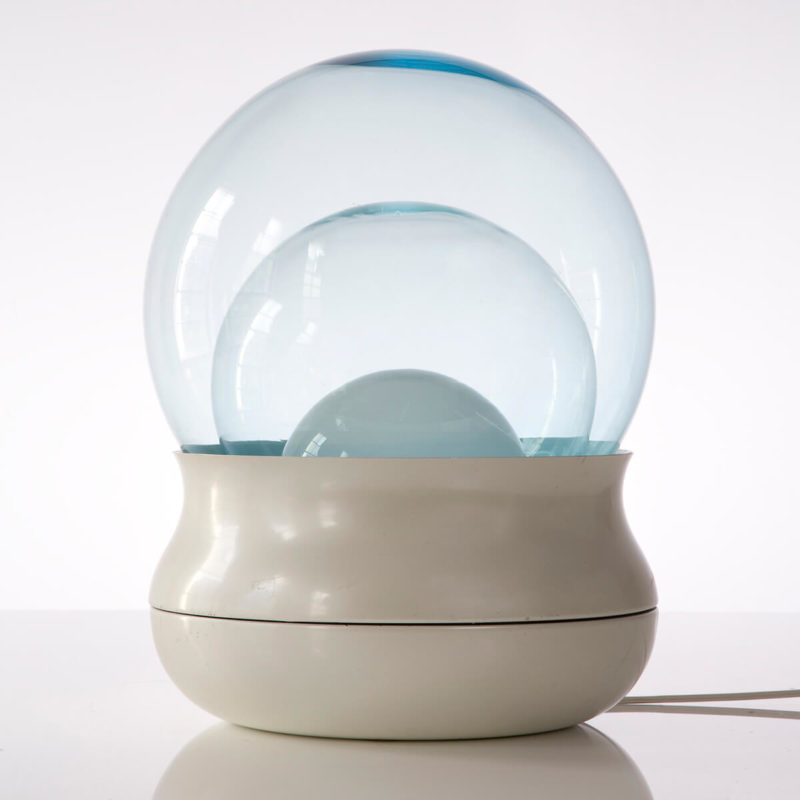
Stilnovo
The origins of the name Stilnovo (“new style” in Italian) go as far back as the thirteenth century, as a poetic movement developed in Florence between 1280 and 1310 that had among its leaders Dante Alighieri. Seven centuries later, industrialist Bruno Gatta founded Stilnovo in Milan, sharing with its poetic predecessor the desire for a genuinely Italian elegance. The company soon became an essential player in postwar Italian design by partnering with the biggest names in the field, like Achille Castiglioni and Joe Colombo (whose Stilnovo collaboration is also part of this exhibition). This 1968 lamp reflects Stilnovo’s design principles by combining an aluminum base with over-imposed glass domes—a bold geometry that questions the relationship between form and function.
...
Round table lamp with enameled aluminum base and colored glass shades.
Produced by Stilnovo, Italy, 1968.
15.75" H x 11.81" D
TL278 -
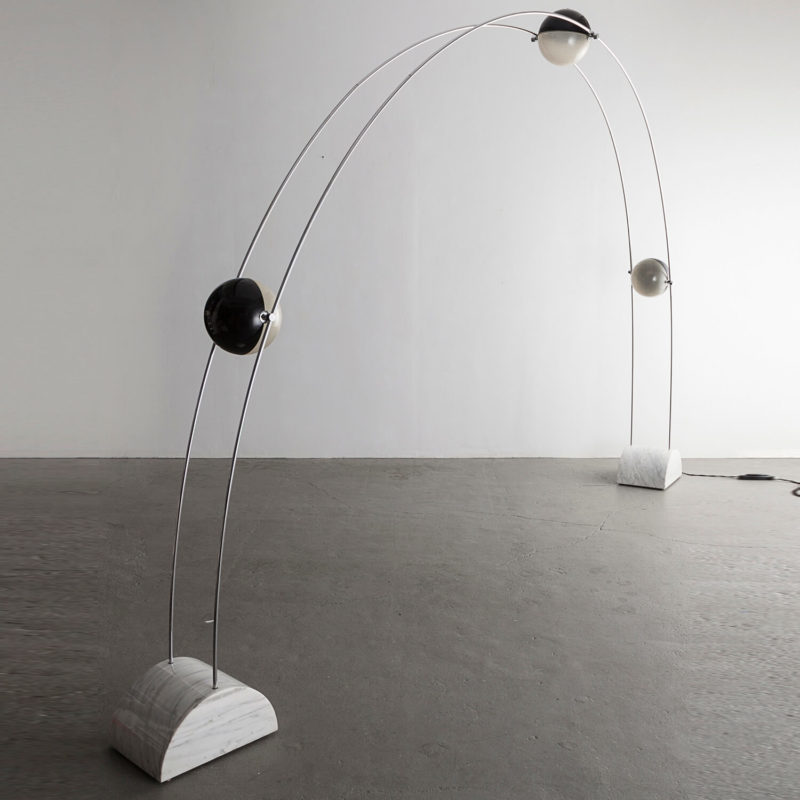
Studio A.R.D.I.T.I., Italy, 1971
Although lesser known than other Italian Radical Design collectives, Studio A.R.D.I.T.I. was behind some of the movement’s most innovative creations. Their lighting designs using metal blurred the barriers of conceptual, interactive, and kinetic art with design, ranging in scale from tabletop fixtures to immersive installations. Such is the case with the “Ponte” (bridge in Italian) floor lamp. The strong but flexible steel arch allows the piece to have different heights and lengths depending on how the marble bases are placed in a room. Moreover, the lamps can be moved to emulate a moon orbiting in space. By 1971, metal had been fully incorporated in the lexicon of design—the vanguard was in rethinking how domesticity itself should look and feel.
...
"Ponte" floor lamp with fixtures on a chrome-plated steel arch with two marble bases.
Designed by Studio A.R.D.I.T.I., produced by Sormani, Italy, 1971.
164" L x 12" W x 96" H (length and height are adjustable)
FL280 -
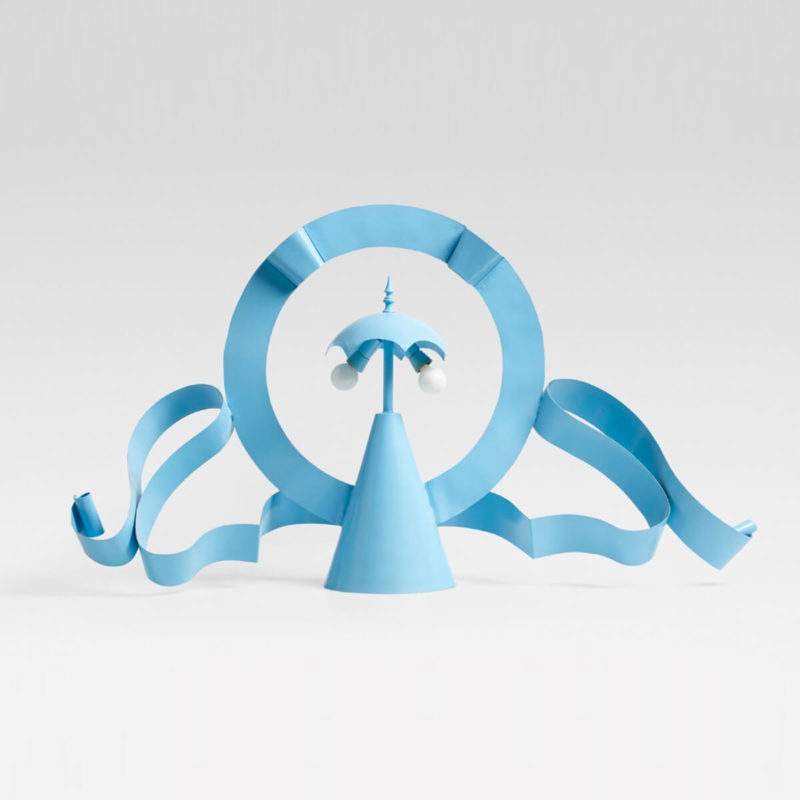
Lapo Binazzi
Appropriating the famed Hollywood logo of MGM Studios as the framework for this table lamp, Lapo Binazzi and the UFO collective removed “Leo the Lion” and replaced him with two bulbs and an umbrella. The ribbons of sheet steel used here are strictly decorative, in keeping with the Italian radical design movement’s emphasis on symbolism over function. The present example in sky blue is from the very first production of the model at the time of the Salone del Mobile, Milan, in 1971. Formerly in the collection of the late Jim Walrod, this lamp was signed by the artist on the occasion of R & Company’s 2016 exhibition on Binazzi and UFO.
...
The Museum of Fine Arts, Houston, became the first American institution to acquire this lamp model as part of its recent acquisition of the Dennis Freedman Collection.
Lapo Binazzi. "MGM" table lamp in blue enameled steel.
Designed by Lapo Binazzi, Italy, 1969.
Produced by UFO, Italy.
39" L x 9" W x 21.5" H
TL664